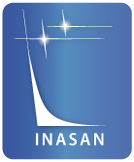 |

ON THE COMBINED USE OF GPS/GLONASS TECHNIQUES FOR THE DEVELOPMENT OF THE RUSSIAN GEODETIC REFERENCE NETWORK S. TATEVYAN, S. KUZIN
Institute of Astronomy, Russian Academy of Sciences, 48, Pyatnitskaya str. 119017, Moscow. RF statev@inasan.ru
Studies of the seismic belts of Eurasia and velocities of the crust movement, estimated with the use of GPS measurements at the sites of the international GNSS network, showed that only a northern part of the continent could be classified as an indivisible lithosphere plate. An establishment of the new Fundamental Astro-Geodetic network (FAGN), based mainly on the combined use of GPS and GLONASS measurements, is now carried out in Russia, under the management of the Federal Department of Geodesy and Cartography in collaboration with the Academy of Sciences. Several core sites of the FAGS network are collocated with the existing IERS stations, equipped with the SLR, VLBI and DORIS instruments. A transfer of the GLONASS coordinate system to the enhanced version of PZ-90/2 reference frame, which is close to ITRF, has been made in September, 2007. Presently the GLONASS system has an incomplete constellation and no more than 10-12 satellites are in operational mode simultaneously. To investigate the possibility of precise positioning with the use of incomplete GLONASS constellation, an experimental analysis of the weekly data (25. 11. 2005 to 03. 12.2005). obtained at the sites of the international GNSS network, has been performed at the Institute of Astronomy. Calculations have been performed with the help of GIPSY-OASIS II software package. Mean values of coordinates (three components E-east, N-north, U-up) of 25 stations from only GLONASS solution have been compared with the mean coordinates from GPS PPP solution. The differences are mainly within 3 cm.

|
 |

